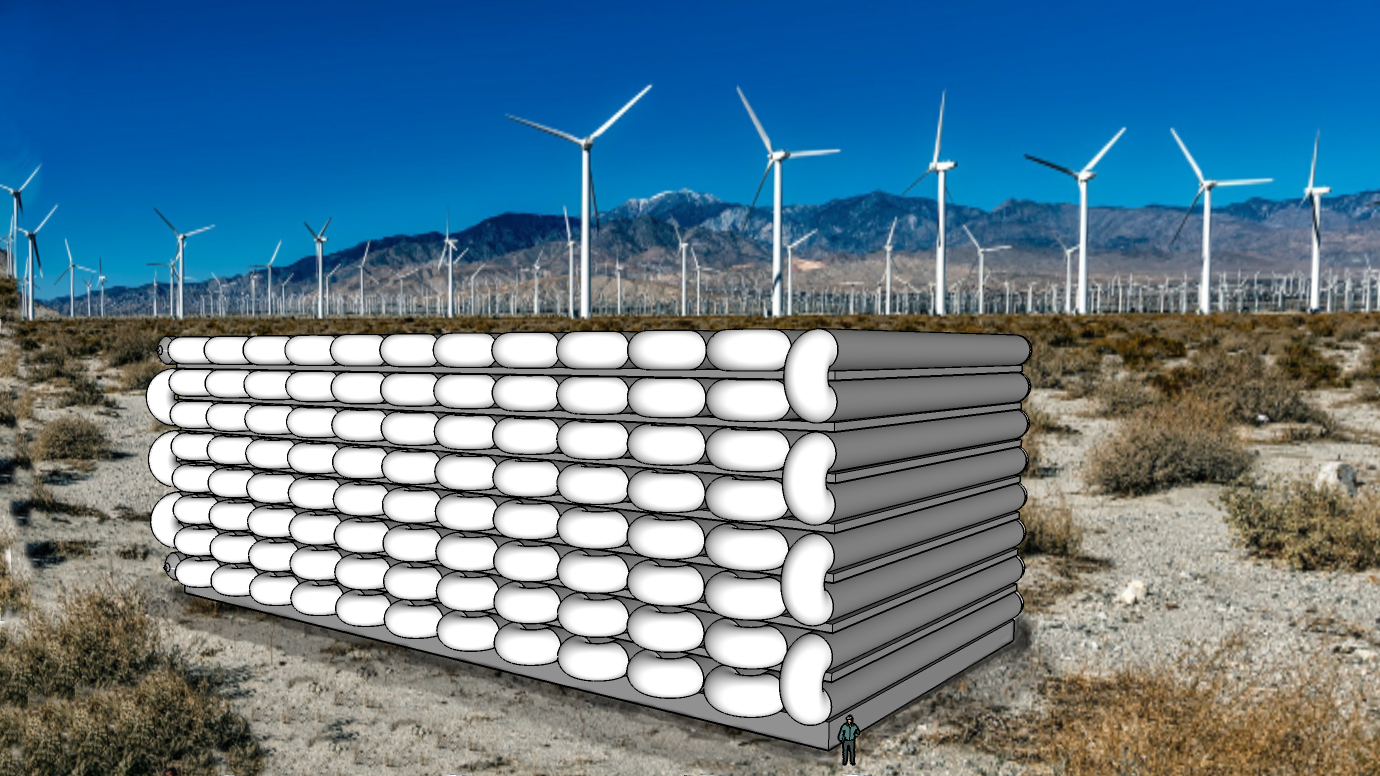Imagine a farmer who sows his fields, nurtures the crops through months of hard work, then — during a particularly good harvest — simply dumps the surplus wheat off a cliff into the sea. How would you describe such behavior? Wasteful? Irrational? Perhaps even absurd? For in all his strategy he neglected to build a barn to store his harvest.
Yet this is precisely how modern energy systems manage the output of solar and wind power. At times of peak generation — when the sun shines brightly and the wind blows steadily — vast amounts of electricity are simply curtailed. Not stored. Not redistributed. Just discarded.
And yet, despite this massive and recurring waste, many self-declared experts continue to call for even more installed capacity as a supposed remedy — without addressing the lack of storage or systemic flexibility. The result is a paradox: more production leads to more curtailment. The system scales up its waste alongside its capacity.
Despite the large-scale expansion of solar and wind capacity, more and more electricity is being curtailed each year. This is not due to a lack of generation, but a lack of seasonal storage and grid flexibility. On sunny and windy days, the grid frequently hits its capacity limits, forcing operators to shut down renewable sources — even as this very electricity will be urgently needed during the dark, windless months. One striking example is Gansu province in China, where over 50% of the installed 10 GW wind capacity electricity is curtailed. However, this wind power plant is to be expanded to 20 GW.
While farmers might waste their harvest once or twice in a decade due to unforeseen disasters, this curtailment of energy happens dozens or even hundreds of times a year. If a farmer were to consistently leave his wheat rotting in the field or throw it off a cliff into the sea, he would be deemed utterly irrational. Yet in energy policy, this practice has become routine.
This mismatch is not a minor issue. According to the AQ2050 study published by TransnetBW, it is structurally embedded in the European power system. The study outlines several key layers of this issue:
- Temporal mismatch between generation and demand – Renewable energy often peaks when demand is low.
- Lack of long-term storage solutions – Excess energy cannot be retained for use in later seasons.
- Insufficient grid capacity – The existing grid infrastructure cannot absorb and distribute peak renewable generation.
- Inefficiency in relying solely on capacity expansion – Merely adding more solar and wind systems without systemic reform deepens the curtailment paradox.
Source: AQ2050 Study – TransnetBW (2024)
A year has 8,760 hours. Of these, roughly 4,700 are dark hours during which photovoltaics (PV) provide no output. Between October and February, even during daylight, the sun’s position and cloudy conditions lead to minimal PV generation. Over the entire year, photovoltaics deliver meaningful power during only 1,000 to 1,100 hours—a mere 11 to 13% of the time. This leaves more than 7,000 hours that must be covered by other sources or seasonal storage.
The same applies to wind energy. Wind turbines deliver energy only when wind speeds exceed about 4 m/s. On average, wind turbines achieve about 2,000 full-load hours per year—less than 25% of the year. Wind lull periods (so-called Dunkelflaute) further reduce the reliability of wind as a base supply.
The core problem, however, is that neither sufficient grid infrastructure nor adequate storage systems currently exist to bridge this gap. Despite technological maturity in generation, the system lacks the backbone needed to retain and redistribute energy across seasons. Moreover, as emphasized in the AQ2050 study, even a large-scale expansion of the power grid would not resolve this issue. Electricity must be consumed at the moment it is generated. When darkness falls or the wind calms, transmission lines fall silent — they do not store energy, they merely distribute it when it’s available.
This makes seasonal energy storage not just a technical requirement but a strategic imperative. At present, large volumes of surplus electricity are curtailed and effectively destroyed, even as vast fossil fuel infrastructure lies idle—waiting for peak winter demand. The AQ2050 study highlights this paradox but also clarifies that neither grid expansion nor hydrogen conversion can resolve the underlying mismatch. Meanwhile, the rigid gas network remains mostly underutilized during spring and summer months, although it could serve as a seasonal buffer — either by directly absorbing surplus energy in the form of compressed gas or by enabling mobile gas supply to areas of need.
Forward-Thinking: High-Density Pipe Storage
Forward-thinking modular high-pressure pipe storage system offers a solution to this challenge. Using serially connected steel pipes (e.g., Nord Stream 2 specification: Ø 1300 mm, length 18 m), the system enables the storage of compressed gas (e.g., CH₄ or biogas) at 250 bar, with the capability of returning the stored energy flexibly and locally during the winter months. This structure bypasses the need for costly net expansion and can be implemented at decommissioned power plant sites, industrial zones, offshore, or even maritime applications.
The stored gas can be fed into the grid in spring and summer when the gas network is underutilized, or it can be transported directly via mobile gas carriers to areas of demand.
Energy Calculation Example: “192-Unit Storage Block”
A model setup consisting of 192 steel pipes and 191 U-shaped connectors has a clearly defined and reproducible geometry:
- Pipe outer diameter: 1300 mm
- Pipe wall thickness: 30 mm
- Pipe length: 18 m
- Internal volume per pipe: precisely 21.75 m³ (based on inner diameter)
- Total pipe volume (192 units): 4,173.57 m³
- Connector volume (191 units à 5.95 m³): 1,136.45 m³
- Total geometric gas volume: 5,310.02 m³
- Normalized gas volume at 250 bar: 1,327,505.72 m³
- Gross energy content (methane, 10 kWh/Nm³): 13.28 GWh
This configuration is meant for illustrative purposes. The same system can be scaled up or down to fit different use cases — for instance, 768 pipes for large industrial hubs, just 3 units for mobile applications, or specialized maritime versions integrated into shipborne infrastructure. The geometric assumptions are fixed and conservative, ensuring that every figure remains technically verifiable. According to this, four such 192 pipe storage facilities would be equivalent to Germany’s total storage capacity, which has been built up over the last 25 years as part of the energy transition.
This is not a concept. It is a scalable, buildable infrastructure alternative that leverages proven materials, idle gas infrastructure, and real-world limitations of current energy systems. Instead of expanding the grid endlessly to chase intermittent supply, we propose shifting to a logic of preservation—like any smart farmer would do.
This paradigm shift in seasonal energy storage has not only been conceptualized but was formally submitted as a patent application on May 27, 2025. It marks a turning point from mere analysis to actionable infrastructure design.
A Paradigm Shift in the Energy Transition
This approach represents more than just an engineering solution—it marks a structural shift in the logic of the energy transition. By replacing the volatile “use-it-or-lose-it” model with a robust “harvest-and-store” principle, seasonal pipe storage introduces the equivalent of an agricultural rethinking into the power sector. It enables control, resilience, and autonomy—qualities the current system lacks.
As solar and wind capacity expand aggressively across Europe, the limits of existing infrastructure become more apparent. Year after year, rising curtailment rates underscore the system’s inability to absorb peak renewable generation. A practical example is Gansu province in China, where more than 50% of the energy generated from renewables must be curtailed.
Instead of continuing down this unsustainable path, seasonal gas storage in pipelines offers a new perspective based on energy independence, scalability, and economic logic. This will allow the planned energy transition to proceed unhindered. Step by step with innovation.









